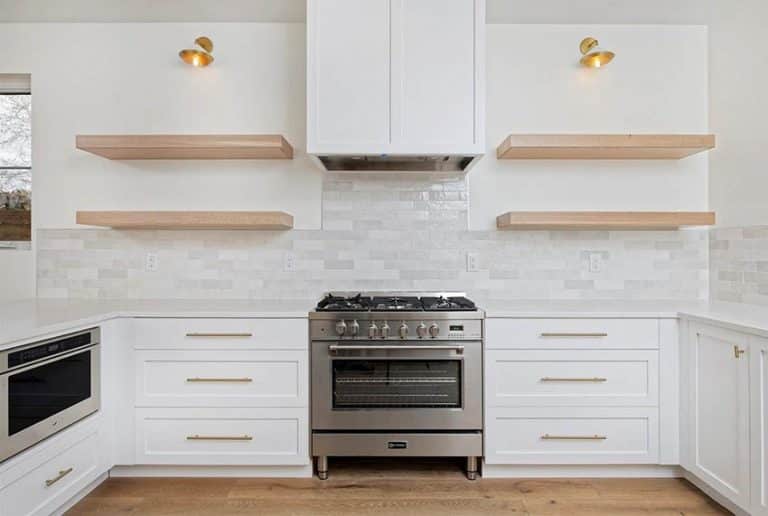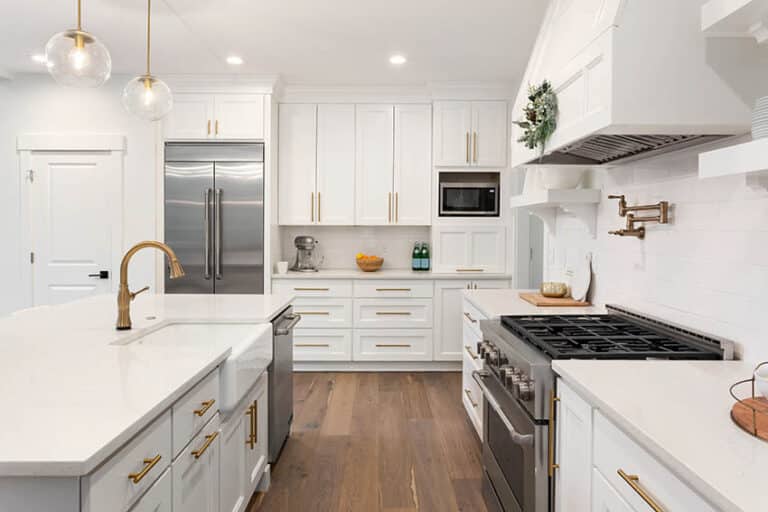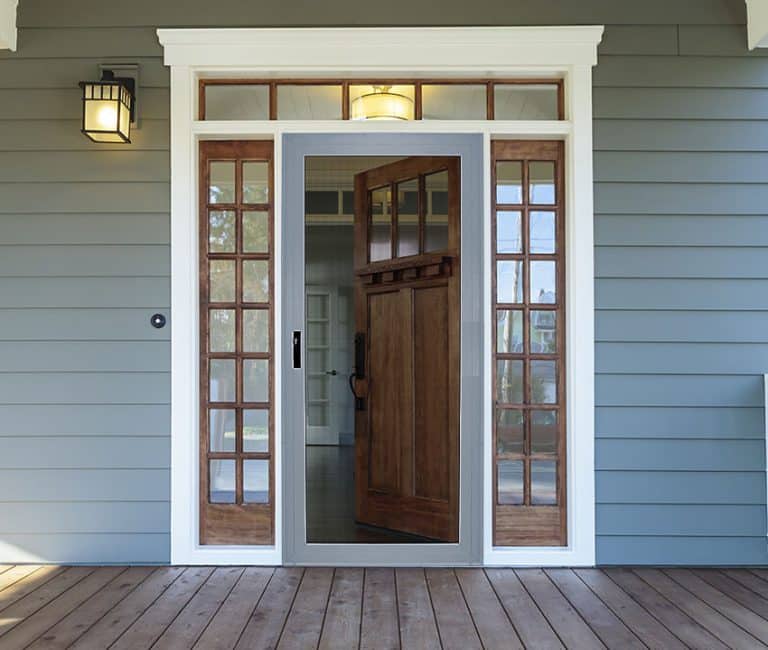10 Types Of Stone Flooring And Their Pros And Cons
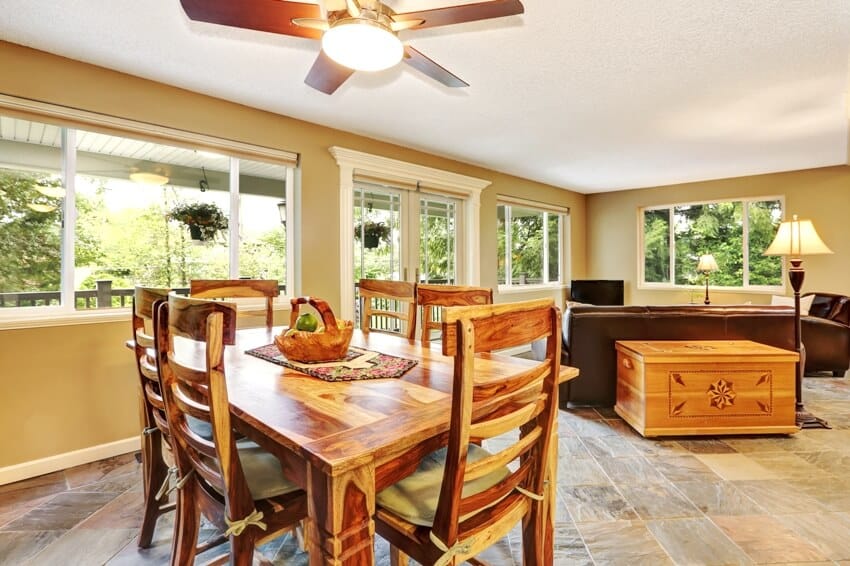
Natural stone flooring is typically cut off directly from slabs or blocks. This process has been used for hundreds or even thousands of years and is as old as time. There are a lot of advantages that come out of getting stone flooring at home. For starters, it has timeless grace and elegance. Homes that use natural stones stay in fashion as it never goes out of style.
More than that, it is also something that can keep your home’s real estate value elevated. This is great for when you decide to sell your home further down the road. It’s also useful if you want to create the feeling and illusion of space at home. By extension, what this results to is something that makes sense design-wise, and a great flow of the materials from flow to ceiling. This allows for better light reflection and can make your space feel bigger and airier.
They come in so many styles, designs, colors, finishes, consistencies, and so on. Here are some of the types of different stone floor materials available as well as their strengths and weaknesses.
Granite
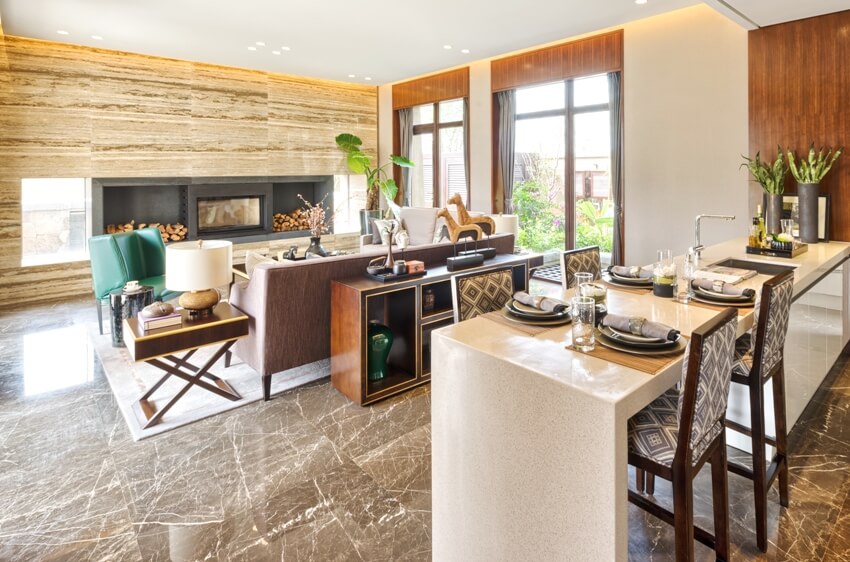
Granite is one of the best out of all of the natural stone flooring options for both residential and commercial purposes. It has a hardness ranking of 7 out of 10 on Mohs scale of hardness. This ultimately means that it is actually even much harder than marble. Granite floors don’t etch, scratch, nor easily get damaged. When granite is properly sealed, you wouldn’t have to worry about staining and similar concerns. Some of the darker colored granite doesn’t even need to be sealed at all.
Also, because of the fact that granite turns out to be typically darker and easier to clean, it is easier to maintain. Dusty, grime, or even stains from spills and the like don’t show up as easily. This means that you don’t have the constant need to clean it, sweep it, mop it up, or even give it special attention from time to time. This makes granite a great a material to have for floors.
Granite also comes in a lot of patterns and colors. As a matter of fact, it is one of the most prolific options in terms of design options. The natural beauty that’s intrinsic to it and with minimal craftsmanship, you can easily get it showcased right in your home. It can make any room in your home immediately look and feel luxurious and works quite well be it in traditional or contemporary home designs.
Although granite is intricate and beautiful, one minor downside is that some patterns or some types of granite wouldn’t be too suitable as flooring materials because their patterns, colors, and veining could turn out to look too busy. Study your specific granite slabs or tiles closely and take it from there.
Quartz
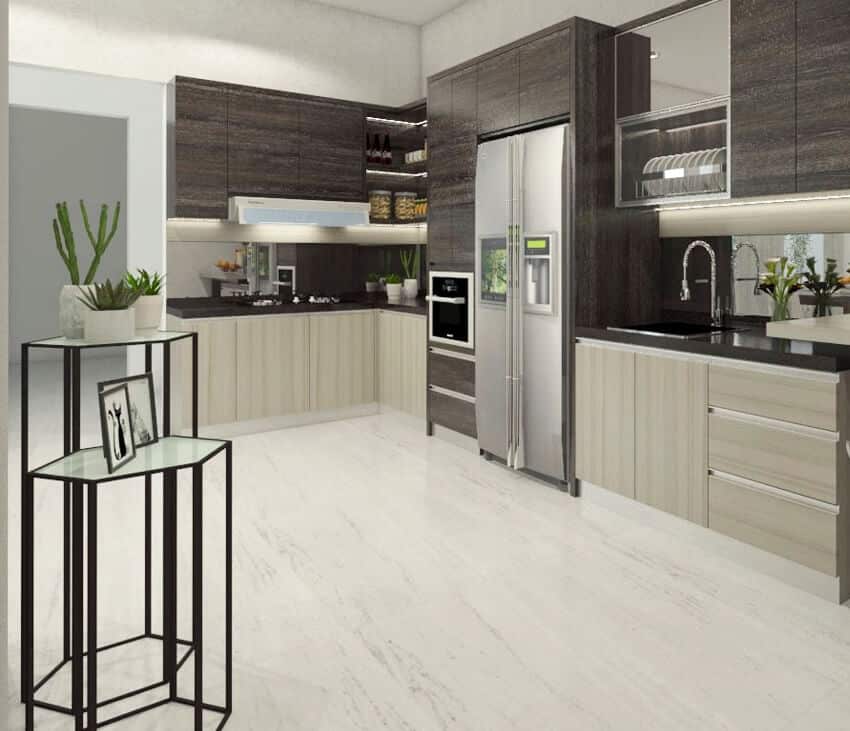
Quartz is a natural stone with a stable base color and is perfect for when you’re looking for a flooring material with less busy patterns. If you want to keep it minimalist and simple, it’s one of the best materials for you to go for. It doesn’t require a lot of upkeep other than the regular sweep and mop. It fares so much better compared to other natural materials that require regular sealing and polishing. This is because quartz is essentially non porous. It doesn’t absorb liquid that much which means you get to maintain its appearance for prolonged periods of time.
They also have a wide range of colors and patterns for you to choose from but mainly, their base is something that’s neutral and muted. You’re bound to always make it fit into whatever design you may have for the room that you’re redecorating.
Natural quartz is something that’s extremely strong and it’s guaranteed to really withstand daily wear and tear and the test of time. A downside to having quartz flooring material is it can be quite slippery when liquids are spilled and not wiped up right away. It’s essential that you work on keeping the surfaces dry all of the time.
Marble
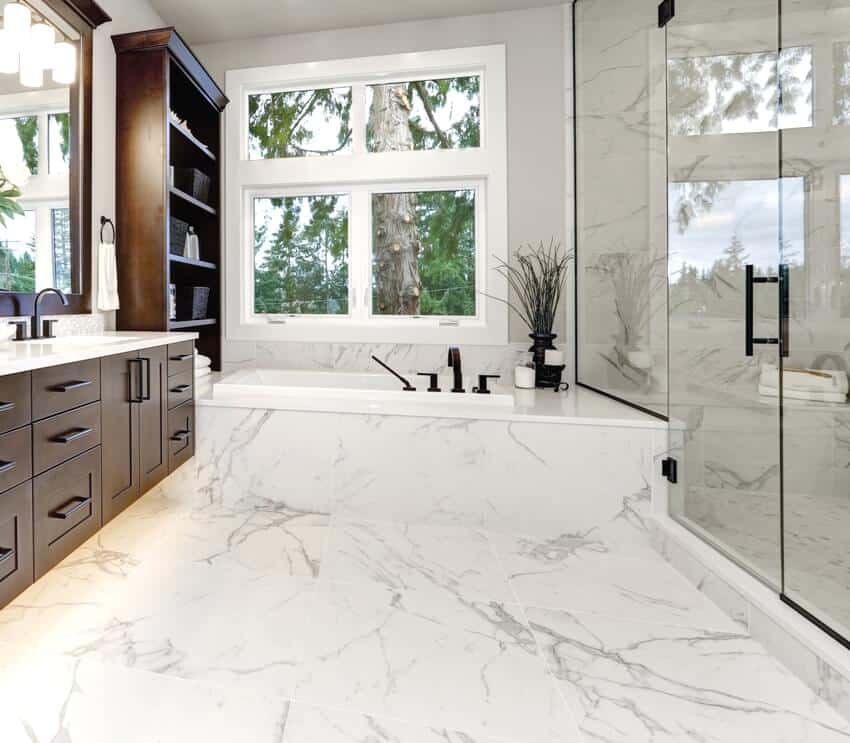
Marble is a material that’s pretty well known for the way it looks. It is something that exudes luxury as well as drama in its appearance. It is known for its highly smooth texture, the kind of drama it creates in its veined patterns, and its overall high gloss finish.
It comes off as very polished and high end. Marble can come in a wide variety of colors although the white one is the most popular of the bunch. They can also go from small mosaic tile sizes to large format ones and can go in every shape you can think of, from round, square, rectangular, hexagonal, triangular, and so on.
If you want to recreate the resort or spa vibe in your home, marble flooring is always the top pick. It’s perfect both as a flooring option as well as a countertop option. A word of caution though, although fairly durable, marble isn’t really recommended for areas of high spills such as a kitchen. This is because it is a calcium based material.
This means that any acidic spills such as from vinegars, cleaners, or citrus juices, could end up etching and permanently damaging the stone’s surface. It also has a slippery surface which can make it hazardous around wet areas. Any etching damages can be easily polished out and repaired though. There are usually special cleaners and etch removers that will be able to get the job done. You should consider sealing marble regularly since it is a porous.
Marble does require a little extra on the side of maintenance, but it still remains quite popular and sought after in the home because of its durability and because of how great it looks overall.
Travertine

Travertine’s composition is quite interesting. It’s a natural stone that formed initially as a type of limestone with hot spring water bubbles blowing air bubbles through it. This makes the material very interesting and unique looking. And of course, an ultimately attractive looking floor option.
Travertine is ideal to have in bathrooms, living areas, laundry rooms, and even hallways. Although the lesser known among the other natural stones, what you need to know about travertine is that it’s basically a mix between limestone and marble. They share more or less the same traits and maintenance requirements.
Like limestone and marble, travertine is calcium based which means that it can be easily etched and scratched either from sharp objects, harsh cleaners, or even acidic liquids and substances. You need to know how to specifically care for it on order for you to extend its life span. And this is one of the downsides of travertine, really. It requires a bit more by way of maintenance compared to its more durable counterparts like granite and porcelain tile.
Still, travertine remains a popular choice especially for pool decks. It has a naturally sandy color that blends in well with the pool and garden environment. Because of its textured surface, it is also slip resistant and tends to stay cooler during the hot days, which means that you can walk on its surfaces barefoot.
Limestone
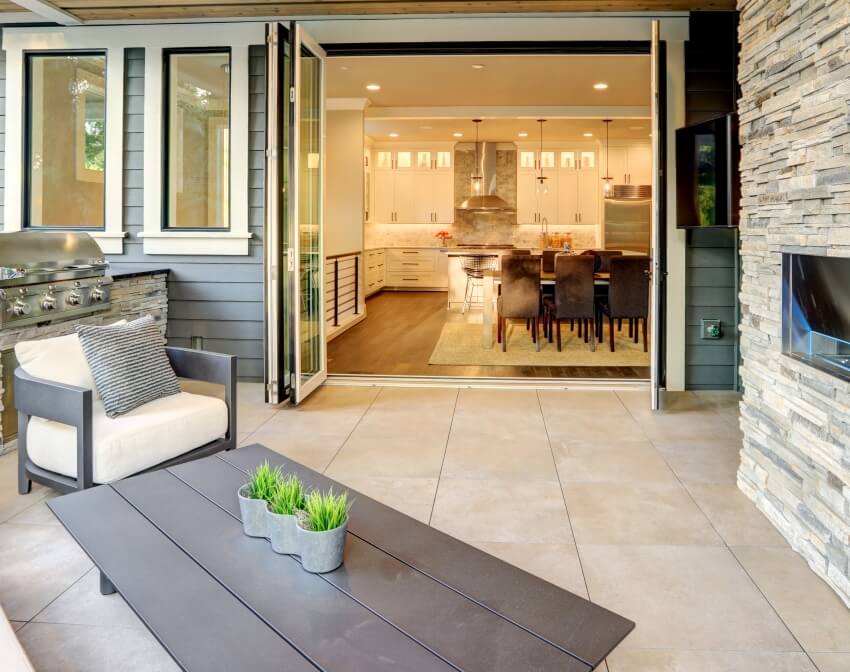
Limestone has very unique properties and characteristics that also make it pretty viable as a flooring material. It is primarily made out of calcium carbonate and is made out of the calcite mineral, which is very similar to the composition of marble. How it’s formed though, is that it is primarily made out of marine creatures that have been fossilized in shallow water. It isn’t weird at all to find the occasional half formed shell or coral and the like in your limestone formations. This is pretty cool, actually.
Limestone is famous for how durable it is. As a matter of fact, it is even commonly used as either a concrete aggregate or as some type of construction or foundation base. It can withstand abrasion and even extreme temperatures. Take note though that because it more or less has the same characteristics with marble, it means that it might also require the same maintenance.
You also need to take note that limestone flooring needs to be installed in areas in the home wherein it won’t have that much exposure to acidic liquids, so definitely keep it out of the kitchen as much as you possibly can. It is, however, great as a flooring option for bedrooms, living rooms, entryways, and so on.
Sandstone
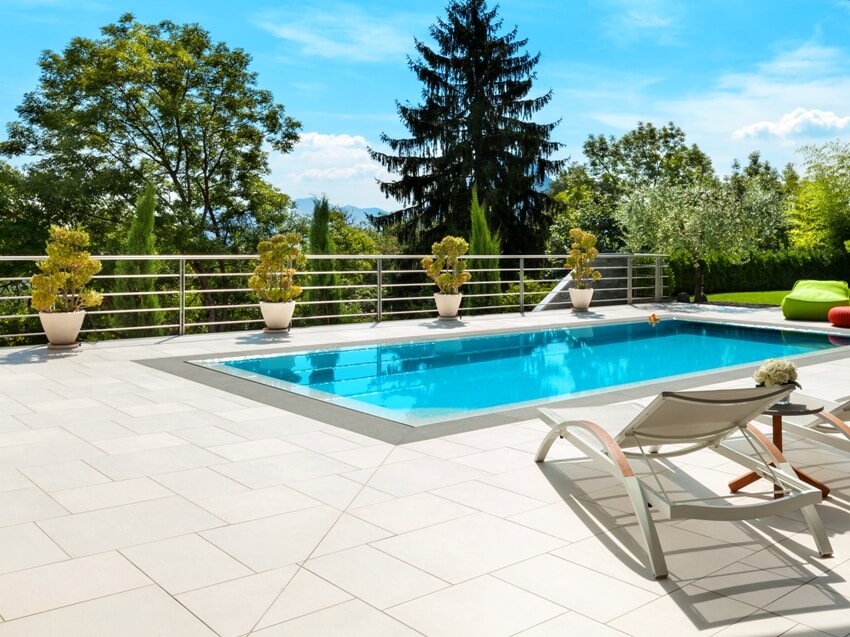
Sandstone is a natural option that is earthy and warm. If you want to come up with a flooring option that is highly reminiscent of the beach, the desert, or something that is fairly similar to that, you can use sandstone. It comes with rich hues of brown, red, and tan shades. Although these are three of the most common colors that sandstone comes in, they can also be in other shades such as grey, pink, black, gold, and white.
Sandstone doesn’t really have a lot of patterns and swirls but this is where its strength is. It has a generally solid and stable appearance which comes highly recommended for flooring materials. However, there will be instances wherein the shades can come in looking mottled and there may be some artistic striations in how the colors appear.
This material is typically porous and softer compared to the other natural stones. It can easily stain and scratch. It certainly isn’t as durable as granite, for example. However, when installed indoors and with the proper care, it may still last long. See more pictures of sandstone flooring here.
Soapstone
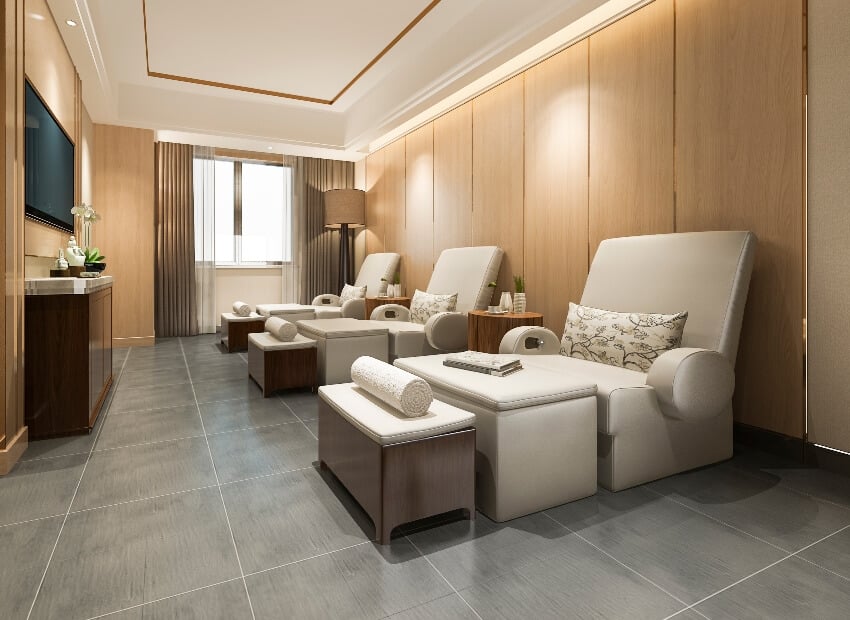
Soapstone is both rustic and elegant. If you want to invest on flooring materials that will really turn out to last for years or even for entire lifetimes, soapstone is the way to go. Its appearance is very similar to that of granite or slate. It is a little uncommon though and not as readily available as it is made out of a steatite and has magnesite and dolomite minerals in it. It is beautiful to look at and there may be times that it can come off as plain looking but this is actually an advantage.
You wouldn’t want an overly busy looking surface for your floors. Soapstone is minimalist and doesn’t look overwhelming. It’s also great to know that soapstone is a natural stone that doesn’t really stain at all. You wouldn’t have to worry about spilled liquids seeping into the surface and staining it as it doesn’t absorb liquids at all because of its nonporous nature. It’s safe to have as a kitchen floor as it doesn’t react negatively with acidic liquids such as vinegar and household cleaners.
And although it may look soft, it doesn’t actually crack easily. It is highly durable and can lost for long periods of time without any need for sealing or applying some type of sealer.
It’s very easy to clean and doesn’t require anything special other than some soap and maybe a mop or sorts. You get a high return on investment as it can raise your home’s real estate value at the end of the day.
Soapstone flooring doesn’t come cheap though and can range up to $85 per square foot. It also doesn’t offer a lot of color options – usually just in shades of black, grey, and the occasional blue. And although it’s a hard material on the surface, it tends to scratch easily so getting it exposed to abrasive materials or objects may damage its surface area.
Pebble Stone
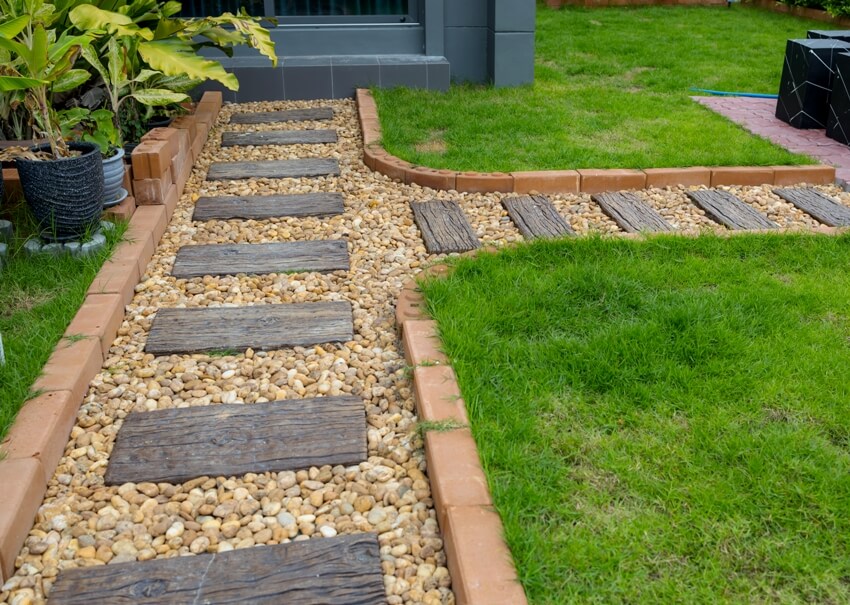
Pebble stone is a type of river rock. If you like the feeling of having pebbles underfoot, this is a great flooring material to consider. It’s usually great as a flooring option for the bathroom or any other areas in the home where you would like to get a little more traction than usual.
It is very affordable to get your hands on and fairly easy to install. If you have kids, pets, and elderly people at home, they’re also safe to have as they minimize slippage.
A major downside to pebble stone flooring, on the other hand, is that it can turn out to be a little high maintenance. It requires special and expert installation. Pebble floors are also typically short lived as they require lots of grout to really get the individual pebbles to adhere properly to the subfloors.
They can be very slippery if installed inadequately. Also, the textured feeling underfoot may not be for everyone so that’s also one thing for you to consider before you actually make the decision to go ahead and get it for certain areas in your home.
There’s also the issue of having puddles or retaining water somewhere along the way. You need to make sure that you constantly get it cleaned and kept try or it may be prone to mold and mildew and other issues related to keeping certain amounts of water for periods of time on the floor area.
Flagstone
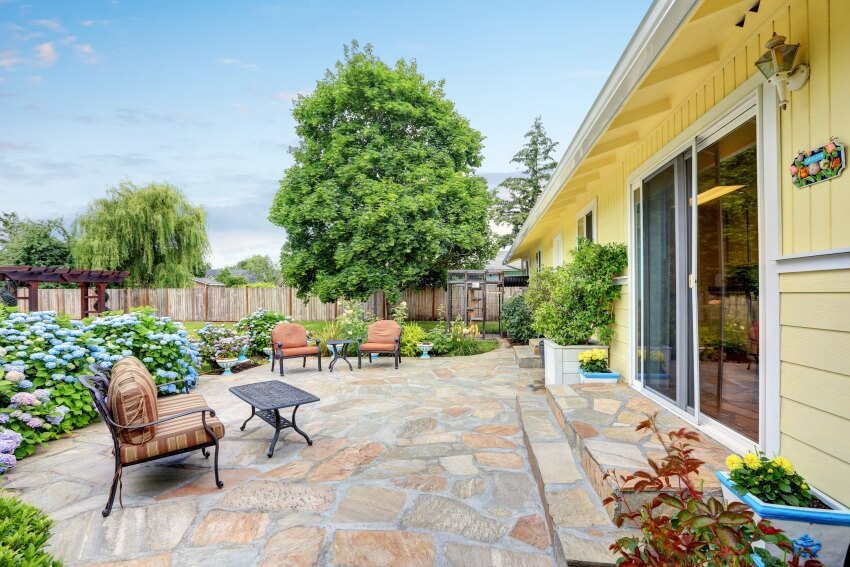
Flagstone is a highly durable flooring material. It can stay intact and pretty sturdy even for centuries for as long as it is properly maintained and for as long as it doesn’t incur any significant physical damages somewhere in the process. It can be installed easily. There is no specific pattern required for getting it installed. They can be cut in any size and shape that you see fit and they can even be thrown in together as a hodgepodge of shapes and sizes. Regardless, the end result is bound to look amazing.
Flagstone flooring material is known to be able to withstand extreme temperatures. If you happen to be living in an area that tends to have that, flagstone is a great flooring option for you to consider.
The only maintenance it requires is getting it swept and sprayed with water every once in a while. It doesn’t require periodic sealing or anything like that at all. The best part about it is that should any area of the floor get damaged, you can easily just get it out and get certain parts replaced.
A major con though is that the material is extremely heavy. This means that getting the material carted in can be a real chore. If you want to make sure that it is done properly and done right, it would be best if you hire it out to professionals. Don’t attempt to get this installed yourself or you might end up with flooring that isn’t stable nor level.
Blue Stone

Bluestone has dark and cool looking colors and shades. If you want a flooring that is pretty easy on the eyes and looks cool temperature wise, bluestone is a great viable candidate. Although blue stone is a material that is more commonly used for the outdoors, it isn’t uncommon to see it installed indoors as well.
It comes in a variety of color options and can even come in types of floor tile formats. It looks very elegant on your floors and when cut in consistent shapes and sizes, you can easily come up with contemporary styled interiors or exteriors. It gives off a very vintage resort vibe in the overall design. The material usually thrives in a free flow pattern so if you want to experiment a little on that, you can feel free to do so.
It is weather resistant and anti-slip, which means that it’s a material that can thrive even as a bathroom floor. It is mainly non porous so it can thrive despite being exposed to moisture all of the time. Bluestone is actually a common material to be seen and used in and around pool areas.
A major drawback to this material would have to be the cost. It offers an old world charm and supply can be a little low while the demand can turn out to be high. Still, it is thick and dense and definitely a great material to get your hands on.
How Much Does Natural Stone Cost?
The cost of natural stone flooring varies greatly depending on the area that you’re in, the type you’re getting, and how much the labor costs are for the installation. If the stones are imported from another country, that could tack on to the costs as well. However, on average, it can be at a good range of $9 to $14 per square foot for the raw materials. You also need to consider what condition your existing concrete may currently be in.
They can be installed right on top of an existing concrete subfloor. This means that it needs to be prepared. If it is a preexisting floor type, there may be wood panels or carpeting that you would have to deal with. You need to make sure as well that the subfloor is evened out prior to the installation. In extreme cases, you may need to replace the concrete completely. This is a separate job that you would have to hire out to a contractor.
How To Clean Stone Floors

Natural stone requires special care and maintenance, especially if the goal is to preserve and prolong its elegance and beauty. Periodic cleaning is absolutely recommended to make sure that your floors are always in top shape. Before you start cleaning your floors though, there are certain steps that you would need to make in order to make sure that your materials don’t incur any damage.
For starters, it’s important for you to consider what type you actually have. There are plenty of finishes for natural stone floors but there are two that top the list: honed finishes and polished finishes.
Polished finishes have glossy surfaces. The markings and the colors are usually emphasized and there are high reflective qualities.
Honed finishes, on the other hand, have smooth satin like surfaces that have little to no reflective qualities. Honed finishes are common on floors as heavy use and foot traffic tend to easily wear off polished finishes.
Cleaning Stone Tips
Here are some basic Do’s and Don’ts you should know about when it comes to cleaning your stone floors:
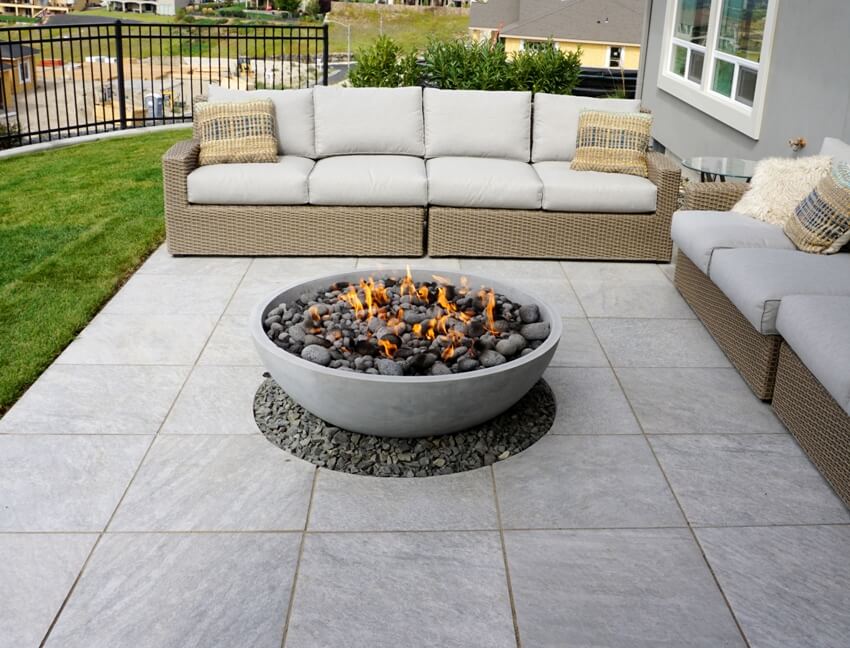
• Mop your stone floors frequently.
• Protect the surfaces with rugs and mats.
• Clean them with mild cleaners or special natural stone soaps.
• Rinse them thoroughly with clear water after soaping and dry them out completely.
• Wipe up any spills immediately.
DON’T
• Don’t use anything acidic from cleansers to lemon juice to vinegar and so on, especially if your stone floors have calcium content such as limestone, marble, onyx, and travertine.
• Don’t use cleaners that are abrasive as they might damage your floor’s surfaces.
• Don’t mix ammonia with bleach as this might create noxious gases.
• Don’t experiment with mixing chemicals together unless specified by the manufacturers.
• Don’t use vacuum cleaners with plastic or metal attachments that are worn out. They might end up scratching your surface and cause permanent surface damage.
Basic cleaning guide for stone floors:
1. Start off by dust mopping your floors. A clean and dry dust mop is usually best for the job. You need to keep in mind that grit, sand, dirt and other abrasive particles cause the most harm to your natural stone floors because of their inherent abrasiveness.
2. Dust mopping or sweeping will get rid of them. It also helps if you have mats or rugs in your home’s entrances. This will help intercept the particles that are making their way into your home.
3. Periodically wash your floors with some clean water and cleaners that have a pH level of 7 or higher. Anything lower is deemed as a bit acidic and may be harmful for your stone floors.
4. Make sure that you follow through with another mop to dry it out or with a soft rag to seep up any excess water.
How To Polish Stone Surfaces

When it comes to polishing your stone floors, it would be best if you get a proper polishing product for it. Natural stone polishing products will provide your surface with a durable finish especially if they happen to be in high traffic areas such as your kitchens and entryways. Try to look for something quick drying and something that’s water based for easier use.
It usually starts off by ensuring that the floor is clean and making sure that it’s sealed. Do not attempt to polish unsealed stone floors.
Dilute around 3 parts of your natural stone polisher in 2 parts of warm water. There will be some variations depending on the product manufacturer so make sure that you read up on the instruction guide for the proper ratio.
Start off by applying a thin coat of the mixture with the use of either a sponge or a mop. Leave the first layer out to try for around an hour or so or until your floors start to shine. You can add multiple coats if you want to build on to it and achieve a higher shine.
You can maintain this by reapplying as you see fit. Take note that you shouldn’t be applying in thick coats. This is something that you need to take your time with.
Apply it in thin layers. Make sure that you do it one at a time and also make sure that you let the coats dry out accordingly in between. Failing to do so will result in the surface getting white marks in certain spots.
In the event that you laid it out too thick and you do get white marks, you can easily clean this out with a recommended natural stone floor cleaner of your choice. But then again, you would have to go through with the process all over again. Patience really is key when it comes to this so take your time and enjoy the process while you’re at it.
Do not attempt to polish your stone floors if they are synthetic, waxed, or varnished. For more related content, take a look at our guide to stone look floor tile materials and designs.

